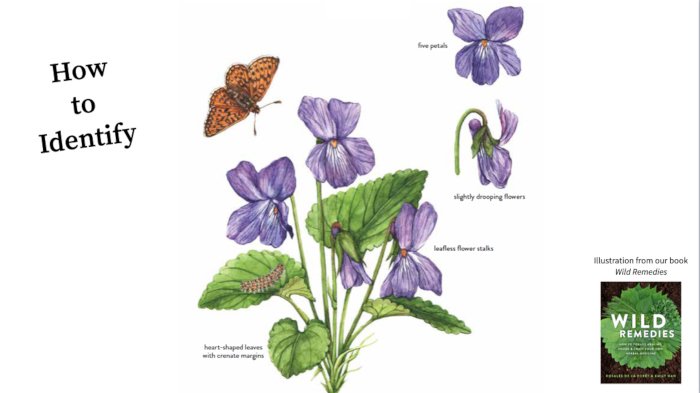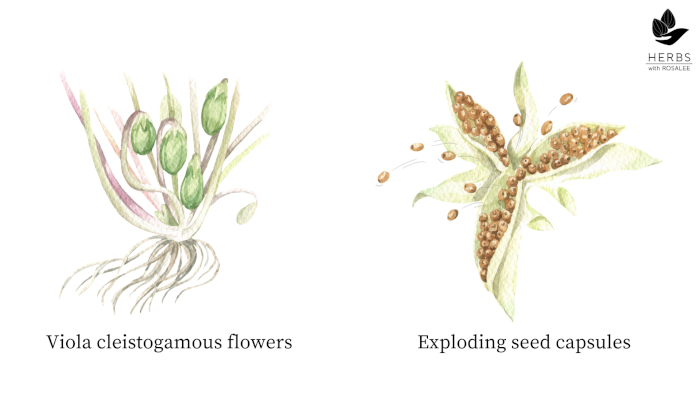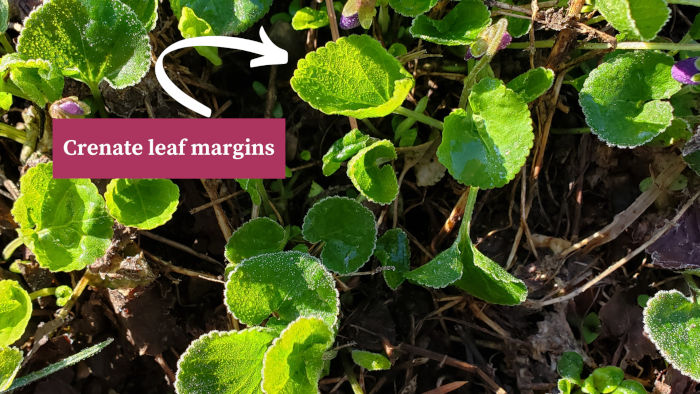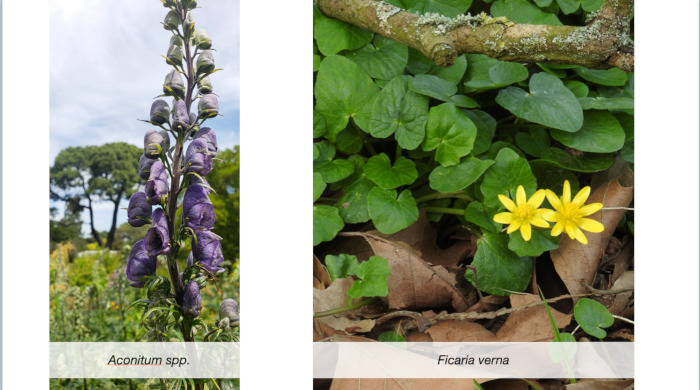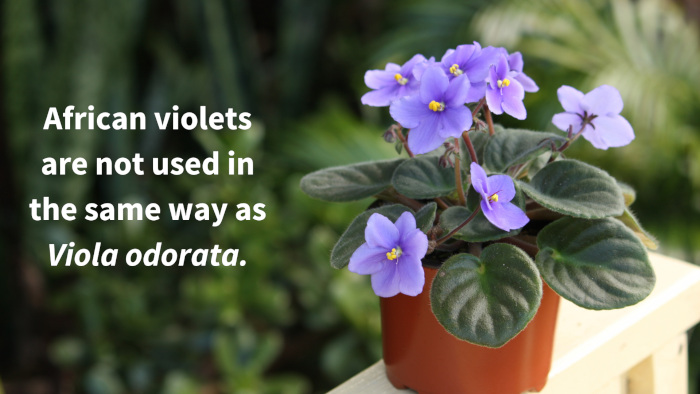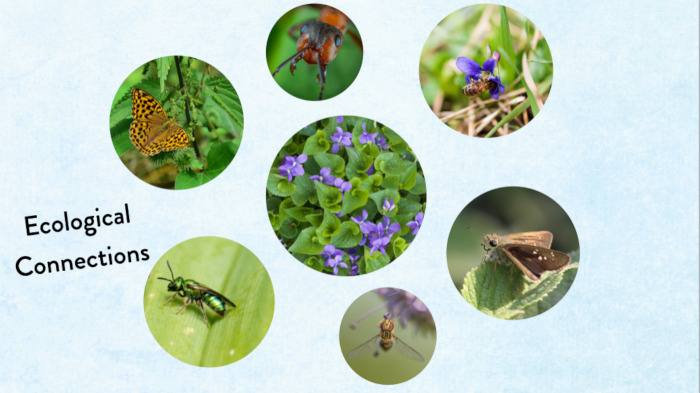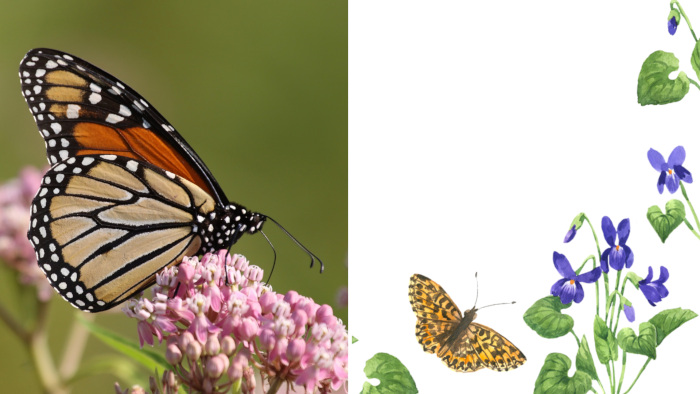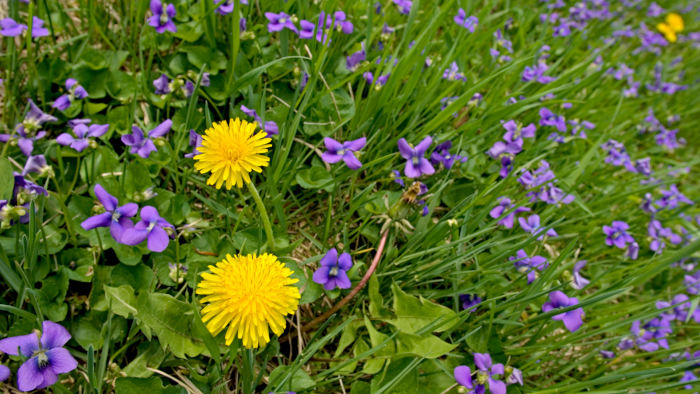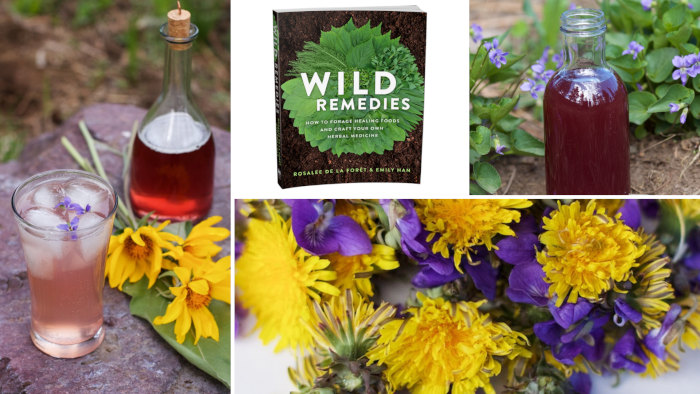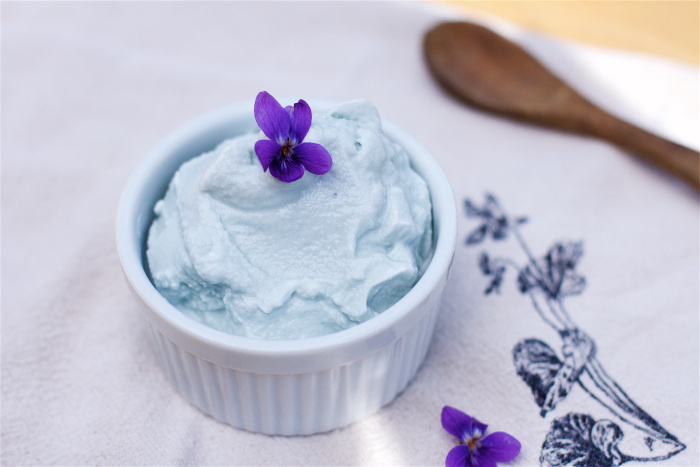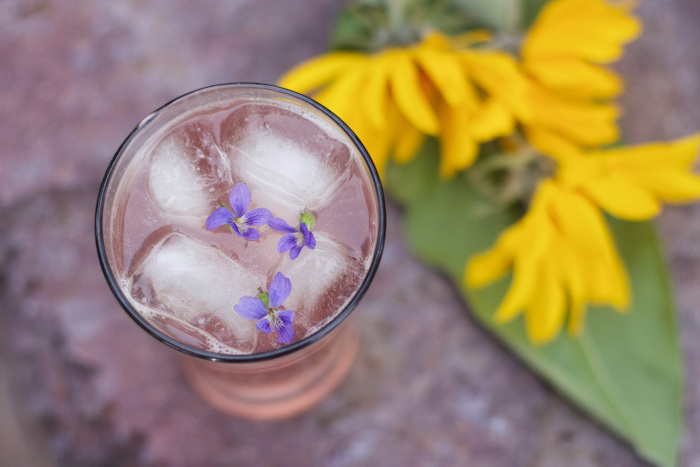Get weekly tips, recipes, and my Herbal Jumpstart e-course! Sign up for free today.
Wildcrafting Edible Violets (Viola odorata)
with a Violet Syrup Recipe
Share this! |
|
-- TIMESTAMPS --
00:00 - Introduction to edible violets (Viola odorata)
00:58 - Why wildcraft violets?
03:04 - How to identify violets
05:52 - Who else depends on violets?
06:35 - Where to find violets
07:47 - Wildcrafting edible violets sustainably
10:21 - How to make violet syrup
13:31 - How to use violet syrup
Thanks for watching my Wildcrafting Edible Violets (Viola odorata)
with Violet Syrup Recipe video!
Are you ready to make your own gorgeous violet syrup?
There are two options for you to download your recipe card.
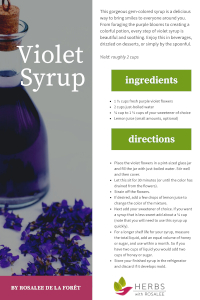
j
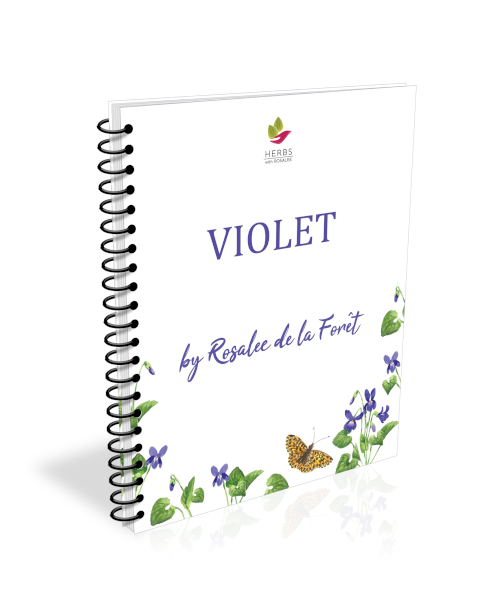
Yes! I would love the
Violet Syrup Card
+
A beautiful violet ebook.
Sign me up!

No thanks. Just the recipe card please.
Click here to download.
And if you’d like some yummy ways to enjoy your violet syrup, check out this article on violet recipes.
Transcript From the Video:
Wildcrafting Edible Violets (Viola odorata) with a Violet Syrup Recipe
One of my favorite springtime activities is wildcrafting edible violets. With the sun on my skin, the birds singing around me, and that alluring scent of Viola odorata permeating the air, it’s a joyful experience that only spring can offer.
In this video I’m going to show you how you can wildcraft edible violets and then make beautiful violet syrup.
Hello! I’m Rosalee de la Forêt, herbalist, teacher, and bestselling herbal author. I’m here to share trusted herbal knowledge so that you can get the best results when using herbs for your health.
And, while you’re here, let me know in the comments below your experience in wildcrafting edible violets. It’s always interesting and insightful to hear the experiences of plant lovers out there. Your suggestion may also help others!
Okay let’s dive in!
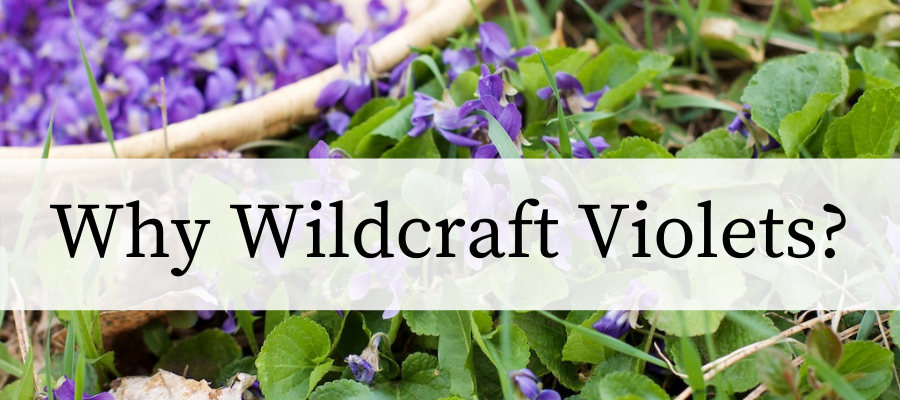
Violets are a delightful treat, a nutrient-dense food, and can also be powerful medicine.
Energetically, violets are cooling and moistening; they can bring relief to hot, dry tissues and modulate inflammation. We can harvest both the violet flowers and leaves as food and medicine.
Violet’s ability to soften and soothe dry and inflamed tissues is a perfect match for dry mucous membranes and irritated coughs. Violets have long been used for coughs in Native American, European, and Chinese medicine.
And researchers are confirming this use. A double-blind randomized clinical trial with children aged 2 to 12 years found that violet syrup could help the coughs of children with intermittent asthma.1
Violets can also soften and soothe a sore throat, especially when it is dry and irritated. It can be used to bring instant relief as a tea, syrup, or infused honey.
An interesting 2019 study showed that hospitalized children with fevers who had violet-infused oil rubbed on their abdomen had a significant decrease in their fever. As a result, those using the violet oil used less acetaminophen.2
Violet is revered for moving stuck and stagnant lymph and has traditionally been acclaimed for softening hardness in glandular tissues. Taken internally and applied externally (as a poultice or infused oil), violet can gently move swollen lymphatic glands in the breasts, armpits, groin, or any other area feeling stuck and stagnant.
Violets can grow abundantly, especially when they are not native to an area. This has earned them the reputation of being a pesky weed. Of course, herbalists love to love weeds. We know they are filled with nutrients that are not often abundant in our depleted grocery store vegetables. This is also the case for violets!
The flowers and leaves contain high amounts of vitamin C and the leaves are also high in beta-carotenes (precursors to vitamin A).
Violet is high in antioxidant anthocyanins and rutin, which are known to support heart health by strengthening and increasing flexibility in blood vessels, reducing cholesterol, and preventing and dissolving blood clots.
As you can see violets are filled with many gifts!
How to Identify Violets
There are up to 600 different species of violets.
There also are many modern cultivars used in gardens (often called pansies or Johnny Jump Ups).
While many species are indeed purple, as the name violet implies, the flowers of the Viola genus range from white to yellow to blue and purple. They can also be multicolored.
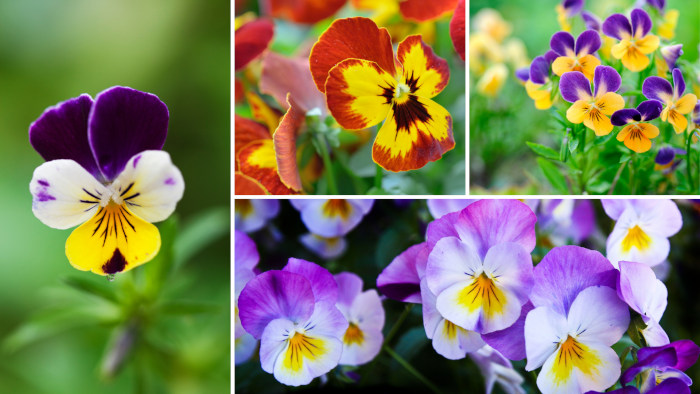
Medicinally most violets are used similarly, but Viola odorata is one of the few violets that have that beautiful and compelling scent.
Violets have irregular flowers with five separate petals arranged in bilateral (side-to-side) symmetry. Sometimes the flowers are described as having four petals in the shape of an X and then the fifth petal is at the bottom like a tongue sticking out. Viola odorata flowers are a deep purple color.
They have five sepals which can persist after the flower has bloomed. Each flower is on a leafless stalk.
In some violet species, the showy flowers of the spring are actually sterile and don’t help the plant to reproduce.
Later in the season, cleistogamous flowers, which are closed, self-pollinated flowers, form seeds beneath the leaves. Both types of flowers result in a three-pronged seed head, which can open with incredible force, ejecting the seeds meters away from the original plant.
The simple leaves are either alternate or basal, and are often heart shaped with rounded tooths along the edges which we call crenate margins.
While violet flowers are easy to recognize, violet leaves have many look-alikes, some of them quite toxic, including monkshood (Aconitum spp.) and lesser celandine (Ficaria verna). Always be certain you can identify the plant before harvesting. I recommend getting a local plant field guide to help you identify the specific violets that are growing near you.
Most violets can be similarly used; however, some violet species are especially high in saponins, a soap-like substance that can cause stomach upset when eaten in large quantities. Once you’ve correctly identified the violet growing near you, give it a taste. Are the leaves sweet and slightly demulcent or mucilaginous? Can you imagine joyfully eating many of them? Or are they not really palatable? Stick with eating the ones that are palatable, and eat them sparingly at first until you see how your body reacts.
One last thing regarding identification and other violets… I’m often asked if the African violets that are commonly grown as houseplants can be used the same way as violets and the answer is no.
African violets are a completely different plant and can’t be substituted for Viola odorata.
Who Else Depends on Violets?
Of course, humans aren’t the only ones to love and rely on violet. For violet species that rely on pollinators for fertilization, the bright flowers attract many insects including bees, moths, and butterflies. Violets can also host larvae for butterflies and moths.
Many of us are familiar with the way that monarch butterflies rely on milkweed plants, and a similar relationship is seen between fritillary butterflies and violets. In other words, without violets we wouldn’t have fritillary butterflies. That’s one of many reasons we want to harvest violets ethically and sustainably.
Where to Find Violets?
Violets are found throughout the world, though they mostly occur in temperate climates. They love to grow in damp shady places. Weedy varieties will delightfully grow abundantly in lawns.
Violets typically flower generously in the springtime, making that the easiest time to find them. Where I live, violets start to bloom around the same time as dandelions. But, you can find their leaves persisting throughout the growing season. As mentioned earlier, the leaves can be easily mistaken for other plants. Following the plant for a year to see how it looks throughout the seasons is always a good idea.
If you aren’t sure where violet may be growing near you, ask around! You may be surprised to find a neighbor or friend who has an abundant amount. A couple years ago while walking around inner city neighborhoods in Portland, Oregon, I was surprised to see many yards filled with violets!
You can also consider growing violets, although they are hard to grow from seed and so it’s best to transplant them. For the past several years, I’ve been planting violet starts all over my lawn in the hopes of having lots of flowers one day!
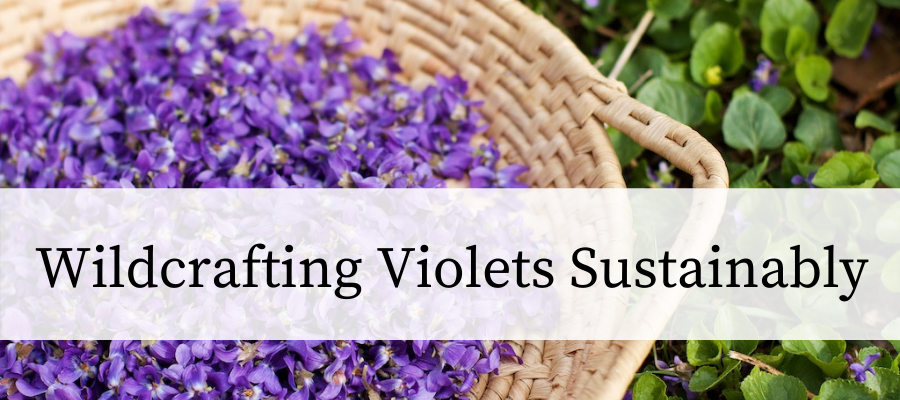
The first step in harvesting any plant is to have a clear plan on why you are harvesting and how you are going to use the harvest. Without a plan you can easily over-harvest, creating a lot of waste. If you want to harvest enough flowers to make the syrup recipe that I’m sharing then aim for 1 ½ to 2 cups of the flowers.
You also want to make sure you have permission to harvest from that area and that the plant is growing in soil that is free from pollutants.
The amount you can harvest sustainably depends on the variety of violets, where they’re growing, and how plentiful they are.
When harvesting weedy violets that are growing in lawns or gardens, you can harvest them robustly. I harvest violets when I find large abundant patches and then I harvest a few flowers and leaves here and there. In other words, I don’t harvest every flower and leaf within sight.
When I leave the violet patch I want it to look like I was never there. In this way I can ensure that the violet patch continues to thrive and there will be more violet harvesting in the years to come. I am also leaving plenty of plants behind for the fritillary butterflies and pollinators who rely on them.
The only tools I bring with me to harvest violets is a basket.
Well, a basket and my hands.
Violets are easy to harvest using only your fingers. The flowers and leaves can easily be pinched off; just take care not to disturb the roots.
You can harvest violet leaves throughout the growing season, but the spring leaves will be the most tender and best for eating. Leaves later in the season are best for drying for tea.
Native violets are much more sensitive to foraging. It can also be tricky to determine how strong their populations are. Violets tend to grow in isolated patches. So you may find a big patch of wild violets but it may be the only patch for miles. Unless you’re deeply connected to the land you’re harvesting from and know for certain that your harvest won’t negatively impact native violets, then I would stick with the weedy varieties.
To learn more about sustainable and regenerative harvesting check out my second book, Wild Remedies: How to Forage Healing Foods and Craft Your Own Herbal Medicine. In there we also have an entire chapter about violets and recipes, including Violet Vinegar, Violet Oxymel, two violet cocktails, and a spring flowers massage oil with both violet and dandelion flowers.
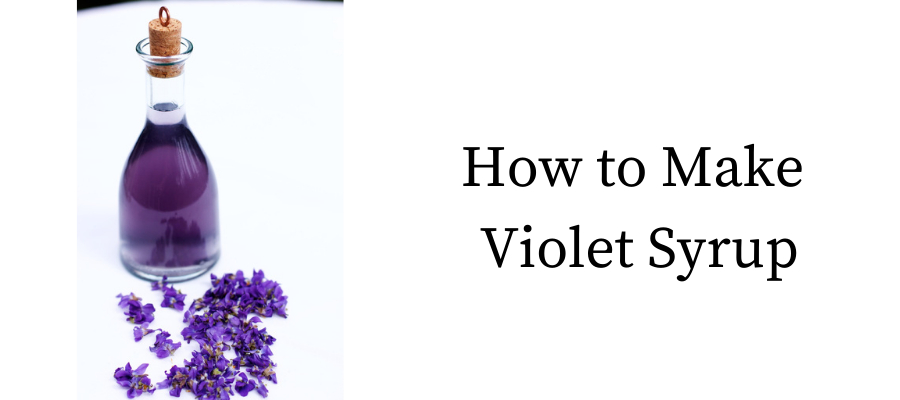
Several years ago, I searched the internet for violet syrup recipes. And I came to realize that many food bloggers out there have simply copied and pasted the same recipe. And the recipe that I was finding everywhere was a poor way to make the syrup.
For example, one common thread was recipes calling for a 24-hour infusion of the flowers. Out of curiosity I tried this and compared it to a shorter steeping time. I found no difference between the two and think that a shorter steeping time makes more sense for these delicate flowers.
For this recipe you can use any sweetener of your choice, with sugar and honey being the most common. The more you use, the better preserved your syrup will be. I prefer to use just a bit of honey and then use the syrup quickly.
The color of your sweetener will change the color of your syrup. For this reason some people prefer to use white sugar to get the most intense color possible. The color of your violets will also affect the color of your syrup. If you’re using Viola odorata violets then you can get a gorgeous purple syrup.
Whatever sweetener you’re using, be sure to have it on hand so you can make your syrup just after harvesting your flowers.
When you use purple-colored violets to make violet syrup (which I recommend), the original color will vary based on the makeup of your water. You can add small amounts of lemon juice to the mixture to change the color. Violets were historically used as a litmus test as they are sensitive to the pH balance. As you’ll see, this makes violet syrup really fun to play around with!
To make violet syrup you’ll need:
- 1 ½ cups fresh purple violet flowers
- 2 cups just-boiled water
- ¼ cup to 1 ½ cups of your sweetener of choice
- Lemon juice (small amounts, optional)
To make the syrup...
Place the violet flowers in a pint-sized glass jar and fill the jar with just-boiled water. Stir well and then cover.
Let this sit for 30 minutes (or until the color has drained from the flowers).
Strain off the flowers.
At this stage you can choose to add lemon juice. When I make violet tea, the water turns blue. I like to add just a few drops of lemon juice to make it purple. The more you add, the more the color will change. More lemon juice can result in a magenta or pink color. Go slowly, just a bit at a time, to get the color you want.
Next you can add your sweetener of choice. If you want a syrup that is less sweet add about a ¼ cup (note that you will need to use this syrup up quickly).
For a longer shelf life for your syrup, measure the total liquid, add an equal volume of honey or sugar, and use within a month. So if you have two cups of liquid you would add two cups of honey or sugar.
Store your finished syrup in the refrigerator and discard if it develops mold.
Want more information about violet syrup? See this recipe.
How to Use Violet Syrup
There are so many ways to enjoy violet syrup!
You can simply take it by the spoonful to soothe a sore throat or dry cough or to address lymphatic stagnation.
I’ve added the syrup to cakes and frostings.
You can make a homemade ice cream or gelato using violet syrup, yum!
You can add a small amount to sparkling water for a fun beverage.
Or you can even use it as an ingredient in your own cocktails and mocktails.
If you enjoyed this article on wildcrafting edible violets and violet syrup and you value trusted information, then I hope you’ll stick around!
The best way to get started is to join my herbal community and get my weekly newsletters with my best herbal insights and tips!
You'll also get access to my free Herbal Jumpstart Course.
Click here to sign up.
Citations for Wildcrafting Edible Violets with a Violet Syrup Recipe
Click to show/hide.

Rosalee is an herbalist and author of the bestselling book Alchemy of Herbs: Transform Everyday Ingredients Into Foods & Remedies That Healand co-author of the bestselling book Wild Remedies: How to Forage Healing Foods and Craft Your Own Herbal Medicine. She's a registered herbalist with the American Herbalist Guild and has taught thousands of students through her online courses. Read about how Rosalee went from having a terminal illness to being a bestselling author in her full story here.
